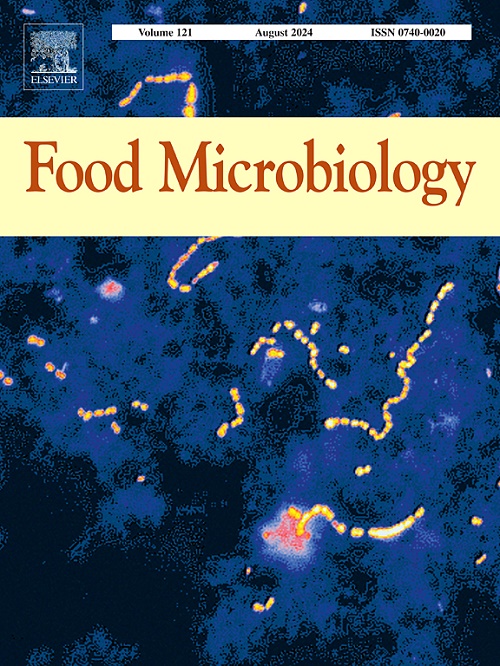Biofilm formation of Escherichia coli O157:H7 strains associated with recent reoccurring lettuce outbreaks
IF 4.5
1区 农林科学
Q1 BIOTECHNOLOGY & APPLIED MICROBIOLOGY
引用次数: 0
Abstract
Genomically closely clustered E. coli O157:H7 strains have been implicated in several recent multistate outbreaks linked to romaine lettuce. The underlying factors contributing to their reoccurrence and persistence remain elusive. Biofilm formation and acid resistance are crucial factors for foodborne pathogens in their environmental persistence and success in host gastrointestinal invasion. Thus, the objective of this study was to investigate the biofilm-forming capability of outbreak strains, their resistance to antimicrobials, and their tolerance to gastric acid, by comparing O157:H7 strains associated with recent reoccurring outbreaks and those associated with previous lettuce, spinach, and hamburger outbreaks. The recent outbreak strains, which were collectively described as “reoccurring, emerging, and persistent (REP)”, exhibited significantly stronger biofilm-forming capabilities and resistance to quaternary ammonium compounds (QACs) compared to other strains. They also exhibited strong tolerance to simulated gastric fluid. Their ability to form robust biofilms is likely attributed to their pronounced production of curli and cellulose, as demonstrated on Congo Red and Calcoflour White agar plates. Moreover, their exceptional resistance to sanitizers may stem from the formation of dense biofilms with higher cellulose content, as visualized using fluorescent dyes under confocal laser scanning microscopy. The findings of this study support the assertion that biofilm formation is a critical factor for the reoccurring outbreak strains for environmental persistence and provide insights for developing prevention strategies.
大肠杆菌O157:H7菌株的生物膜形成与最近再次发生的生菜疫情有关
基因组紧密聚集的大肠杆菌O157:H7菌株与最近几次与长叶莴苣有关的多州暴发有关。导致它们再次发生和持续存在的潜在因素仍然难以捉摸。生物膜的形成和耐酸性是食源性病原体在环境中持续生存和成功入侵宿主胃肠道的关键因素。因此,本研究的目的是通过比较与最近复发的疫情相关的O157:H7菌株和与以前的生菜、菠菜和汉堡包疫情相关的O157:H7菌株,来调查爆发菌株的生物膜形成能力、对抗菌素的耐药性和对胃酸的耐受性。最近暴发的菌株被统称为“再发生、新出现和持续(REP)”,与其他菌株相比,它们表现出明显更强的生物膜形成能力和对季铵盐化合物(QACs)的抗性。它们对模拟胃液也表现出很强的耐受性。它们形成坚固的生物膜的能力可能归因于它们显著的curli和纤维素的生产,如刚果红和钙粉白琼脂板所示。此外,它们对杀菌剂的特殊抗性可能源于形成具有较高纤维素含量的致密生物膜,在共聚焦激光扫描显微镜下使用荧光染料可见。本研究的发现支持了生物膜形成是反复发生的暴发菌株环境持久性的关键因素的主张,并为制定预防策略提供了见解。
本文章由计算机程序翻译,如有差异,请以英文原文为准。
求助全文
约1分钟内获得全文
求助全文
来源期刊

Food microbiology
工程技术-生物工程与应用微生物
CiteScore
11.30
自引率
3.80%
发文量
179
审稿时长
44 days
期刊介绍:
Food Microbiology publishes original research articles, short communications, review papers, letters, news items and book reviews dealing with all aspects of the microbiology of foods. The editors aim to publish manuscripts of the highest quality which are both relevant and applicable to the broad field covered by the journal. Studies must be novel, have a clear connection to food microbiology, and be of general interest to the international community of food microbiologists. The editors make every effort to ensure rapid and fair reviews, resulting in timely publication of accepted manuscripts.
 求助内容:
求助内容: 应助结果提醒方式:
应助结果提醒方式:


